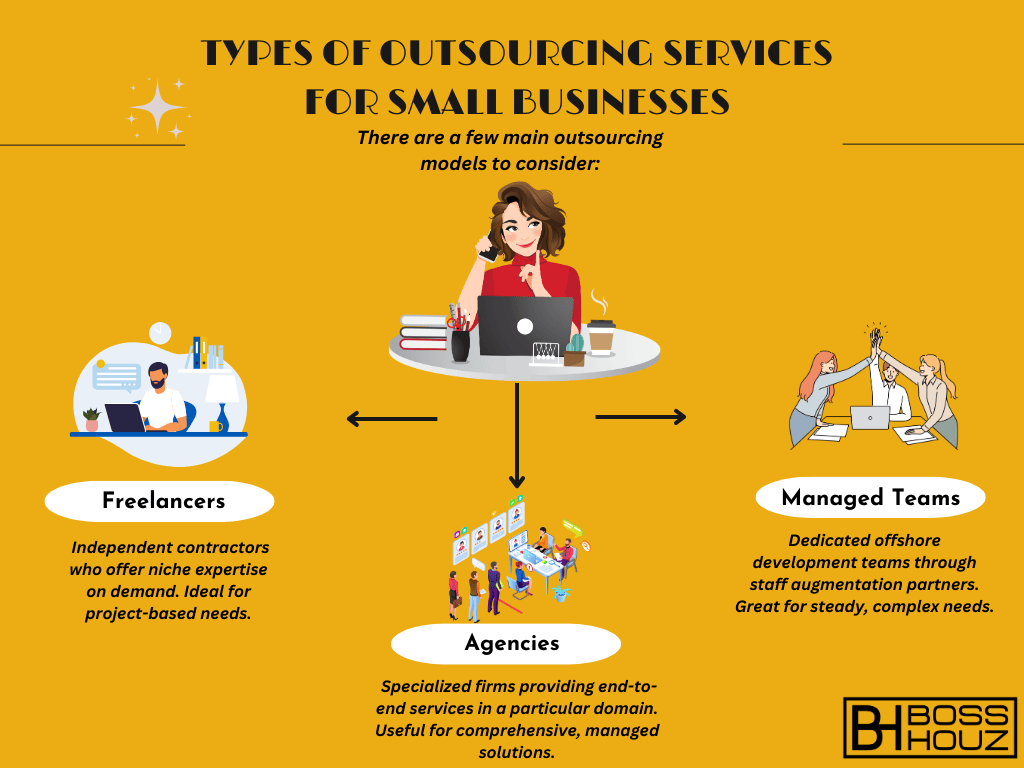Staffing your small business effectively is crucial yet challenging. Between managing costs, finding qualified candidates, and ensuring proper compliance, the hiring process can easily go awry. This guide will explore the nuances of building your small business dream team through strategic hiring and outsourcing.
Table of Contents
Understanding Outsourcing for Small Businesses
Outsourcing allows small business owners to tap into global talent pools and niche experts to strengthen capabilities, drive innovation, and boost productivity. But it requires careful vendor selection and management.
What is Outsourcing?
Outsourcing involves partnering with an external service provider to operate a specific business process or function. This differs from hiring in-house employees to handle tasks internally. Reasons to outsource include:
- Cost savings
- Access to specialized skills and technology
- Improved quality or efficiency
- Flexibility to scale or adapt swiftly
Common outsourced functions include IT services, customer service, manufacturing, marketing, finance, HR, and more.
Types of Outsourcing Services for Small Businesses


There are a few main outsourcing models to consider:
- Freelancers: Independent contractors who offer niche expertise on demand. Ideal for project-based needs.
- Agencies: Specialized firms providing end-to-end services in a particular domain. Useful for comprehensive, managed solutions.
- Managed Teams: Dedicated offshore development teams through staff augmentation partners. Great for steady, complex needs.
Each model has its own pros, cons, and pricing. Assess your needs to choose the right fit.
Pros and Cons of Outsourcing


Below is an analysis of the core benefits and potential drawbacks of outsourcing for small businesses:
Pros
- Cost Savings: Outsourcing can significantly lower labor, infrastructure, and operations costs.
- Productivity & Efficiency: External teams specialize in particular functions and use the latest tools and processes to work faster.
- Expertise & Innovation: Access skills, ideas, and technologies that may not exist internally, especially for emerging capabilities.
- Flexibility & Scalability: Swiftly scale up or down to meet changing business needs and seasonal demands.
- Focus on Core Goals: Offload secondary tasks so internal staff can focus on critical functions aligned with company values and vision.
Cons
- Quality Control: Challenging to verify capabilities upfront or fully monitor work processes remotely. Must establish robust governance.
- Security Risks: Sensitive data could be exposed, especially when working with offshore partners. Strict security protocols are essential.
- Communication Barriers: Collaboration can suffer across time zones, languages, and cultural nuances. Strong relationship management alleviates issues.
- Loss of Control: Less direct oversight into day-to-day operations. Mitigate with status reports, product demos, code reviews etc.
- Staff Turnover: If outsourced talent leaves frequently, knowledge drain and recruiting efforts rise.
💡Pro Tip: Balance the pros and cons to determine if outsourcing matches your top business priorities. Analyze where external capabilities can drive the most impactful efficiencies or innovations.
New Trends in Outsourcing
The outsourcing landscape keeps evolving with globalization, advancing technologies, and changing workforce dynamics. Below are some notable outsourcing trends to watch:
- Rise of Talent Networks like Toptal and Catalant connect businesses with vetted, on-demand specialists for project-based work. This new model offers greater flexibility.
- Micro Outsourcing through sites like Fiverr break projects into micro-tasks that businesses can easily outsource for as low as $5 per job.
- Social Media Integration to attract and collaborate with talent. Platforms like Facebook, LinkedIn, and Github help find partners.
- Data Security Investments by outsourcing providers to protect client information through encryption, access controls, cyber insurance etc.
- Automation & AI Assistance improve communication and coordination across distributed teams via chatbots, machine translation, robotic process automation etc.
- Compliance Adherence to labor, data privacy laws etc. Certifications like SOC 2, ISO 27001 demonstrate credibility.
- Nearshore Expansion taps talent pools within closer geographical proximity for better coordination and cost optimization versus popular offshore locations.
💡Pro Tip: Monitor outsourcing developments to identify innovative solutions for your small business’s needs as new specialty providers, niche professionals, enabling tools and streamlined processes emerge.
The Hiring Process for Small Businesses
While outsourcing aids business expansion, building a solid in-house team aligns talent with company values and fuels sustainable innovation. Below is an overview of key hiring steps for small business owners.
The In-House Hiring Advantage
Reasons to hire employees rather than outsource certain functions include:
- Greater Control & Oversight: Closely manage processes, provide internal training to nurture talent exactly as needed.
- Cultural & Strategic Alignment: Employees assimilate company vision to inform decisions. Outsourced teams have less context about long-term goals.
- Responsiveness: Faster problem resolution with internal staff compared to waiting on external schedules.
- Intellectual Property Ownership: Work product and proprietary knowledge stays within the company.
- Employee Loyalty & Retention: Build an invested workforce with opportunities to grow rather than transient external hires.
💡Pro Tip: Weigh specific business functions that could benefit more from internal ideation versus external execution. Analytics, R&D and proprietary systems development often need internal talent, while supplementary marketing, customer support etc. can be outsourced.
Steps to Effective In-House Hiring
Hiring productive employees who align with company values involves careful planning and consistent evaluation from start to finish. Below are key phases of the hiring process:
1. Planning & Budgeting
- Forecast open positions based on growth plans.
- Allocate sufficient budget for competitive compensation packages to attract qualified candidates.
- Partner with recruiters to source leads if needed.
2. Posting
- Craft an accurate, complete job description highlighting must-have and nice-to-have skills.
- Promote on online job boards targeting relevant talent pools, niche sites for specialized roles, social media channels etc.
3. Screening & Interviewing
- Review application materials to shortlist qualified candidates for further assessment.
- Develop a structured interview approach to evaluate skills, culture fit etc.
- Conduct background checks before making final offer decisions.
4. Selecting & Onboarding
- Inform candidates of offer details like compensation, benefits, policies etc. Secure acceptance.
- Develop engaging onboarding programs covering technology setup, training, and mentoring.
5. Performance Management
- Establish clear key performance indicators aligned to business goals.
- Set up consistent check-ins and reviews to provide candid feedback and coaching.
- Address needs for additional training, tools, or support to nurture productivity.
💡Pro Tip: Invest in streamlined applicant tracking and project management systems to enhance efficiency and collaboration across distributed teams during hiring and beyond.
Overcoming Hiring Challenges
Despite best efforts, small businesses often encounter obstacles during hiring such as:
- Budget Constraints make it difficult to offer competitive packages to top talent or develop high quality training programs.
- Finding Qualified Candidates gets harder for specialized emerging capabilities where talent pools are smaller.
- Culture Misalignment derails productivity when new hires don’t assimilate company vision or values.
- Compliance Risks arise from lack of HR expertise in legal, ethical hiring practices.
Here are some solutions to common hiring challenges:
- Seek government incentives or apprenticeship programs to alleviate budget constraints when hiring.
- Expand reach through niche job boards, recruiter partnerships, and referrals to access qualified talent.
- Prioritize values alignment during screening and highlight company culture from the interview process through onboarding.
- Consult HR advisors to ensure legal compliance, equitable opportunities, and ethical treatment.
💡Pro Tip: Develop strong employer branding highlighting unique company vision, values and culture to attract top talent that naturally aligns with strategic goals.
Outsourced Recruiting for Small Businesses
While outsourcing core functions like analytics or engineering is common, small businesses can also consider an outsourced approach to recruiting itself to tap into expanded talent networks and optimized hiring processes.
How Outsourced Recruiting Works
Also known as Recruitment Process Outsourcing (RPO), this model provides end-to-end talent acquisition capabilities from vacancy marketing to applicant screening and interviewing, filtered through a company’s specific hiring criteria.
- Businesses provide job descriptions, skills requirements, compensation details etc.
- RPO partner develops
- RPO partner develops targeted recruitment strategies and sources qualified candidates through proprietary networks and pipelines.
- They screen applicants per provided criteria, conduct interviews and assessments, handle offer negotiation and background verification.
- Partners provide analytics on hiring metrics like cost per hire, time-to-fill roles, and candidate conversion rates to refine strategies.
Compared to traditional staffing agencies that fill specific openings, RPOs offer long-term partnerships to strategically enhance talent acquisition.
Choosing the Right Recruiting Firm
Factors to analyze when selecting an RPO partner:
- Industry Expertise: Domain knowledge to source niche technical talent or other specialized skills as needed.
- Technical Capabilities: Utilization of the latest hiring tools and platforms to expand reach.
- Proven Methodologies: Data-driven recruiting processes that yield optimal assignments across various hiring needs.
- Scalability: Ability to rapidly scale up or down as hiring needs fluctuate.
- Cultural Alignment: Responsible, ethical, and compliant hiring practices.
Prepare specific questions around strategies, metrics, tools, and policies during the RPO selection process.
Success Stories: Outsourcing Impact
Take inspiration from real small businesses that boosted hiring through RPO:
- Pet goods provider Chewy scaled from 5 employees to over 800 in their first two years by partnering with an RPO to tap retail and ecommerce experts1.
- Specialty glass manufacturer Apricity acquired niche technical talent 40% faster after outsourcing recruiting2.
- Clinical diagnostics firm Sera4 accelerated their talent pipeline by over 50% within months of engaging an RPO2.
The collective power of expanded talent networks, optimized processes and dedicated focus makes RPO a strategic growth lever for ambitious small businesses.
💡Pro Tip: Consider recruiting process outsourcing if difficulties attracting top talent fast enough are slowing your growth trajectory. The right RPO speeds access to in-demand, qualified candidates.
Balancing Hiring and Outsourcing
Getting the most out of both hiring and outsourcing models depends on aligning functions to business goals, budgets and capabilities wisely.
When to Hire vs. When to Outsource
Choosing between building internal teams vs. external partnerships calls for a thoughtful assessment across factors like:
Business Criticality
- Core capabilities that influence competitive advantage and intellectual property should often stay in-house.
- Contextual capabilities tightly coupled to business operations could also warrant internal hires.
- More tangential functions are safer to outsource with lower risks.
Project Scope
- Ongoing work across evolving long-term initiatives is best suited for employees.
- Temporary or experimental short-term projects lend themselves to outsourcing.
Cost Analysis
- Balance savings potential from outsourcing against budget availability for hiring.
- Consider long-term costs for internal training, management etc.
💡Pro Tip: Regularly re-evaluate business priorities, available capabilities, funding, and existing talent bench strength to decide optimal hiring vs outsourcing balance.
Hybrid Models: Blending In-House and Outsourced Teams
Rather than binary decisions, hybrid teams effectively blend internal and external resources across key roles:
- Core leadership and strategic decision makers hired internally
- Supplementary contingent contractor roles outsourced on-demand
- Project-based tactical execution outsourced to external partners
- Advisory consultants supply niche insights
This balances business-critical oversight and governance through in-house leaders with flexible access to specialized skills externally.
💡Pro Tip: Foster collaboration across in-house and outsourced team members through all hands meetings, knowledge sharing forums, collaborative tools and team building events.


Managing Outsourced Relationships
Smooth outsourcing depends on closely monitoring external providers through structured governance.
Communication & Collaboration Tools
Digital platforms that enable transparency, traceability, and seamless workflow include:
- Project Management software like Asana or Trello to assign tasks, monitor progress, share updates in one place.
- Instant Messaging tools like Slack, Teams or WhatsApp for casual conversations and quick feedback.
- Video Conferencing through Zoom, Skype or Google Meet for face-to-face discussions.
- Code Repositories like GitHub and version control systems provide real-time code access and change history.
💡Pro Tip: Create a centralized digital command center integrating project management schedules, frequent chat channels, shared drives etc. to align distributed teams.
Ensuring Quality & Accountability
Best practices for governance:
- Establish precise SLAs covering security, quality, responsiveness, and reliability expectations.
- Agree on performance metrics + KPIs for success tracking.
- Schedule demos + reviews for work delivered, code quality etc.
- Conduct user acceptance testing across software, campaigns etc.
- Enable client shadowing for monitoring offense team interactions.
- Build transparent reporting on capacity utilization, budget burn rates and more.
💡Pro Tip: Automated governance through AI testing, sentiment analysis tools, and centralized reporting reduces manual oversight needs for outsourced partnerships.
Legal & Ethical Considerations
Key focus areas:
Contracts
- Ensure comprehensive scope of work, payment terms, SLAs, IP rights etc.
- Watch for auto-renewals, liability limits etc. in formal agreements.
Data Protection
- Review partners’ security infrastructure, breach history, certificates etc.
- Establish permitted data handling policies.
Labor Standards
- Validate fair pay, reasonable work hours and ethical treatment for offshore teams.
Local Regulations
- Adhere to laws around consumer data privacy, localization etc. in partner geographies.
💡Pro Tip: Seek specialized legal guidance when structuring complex outsourcing deals across new regions or services involving substantial IP, data sensitivity, or other compliance nuances.
The Future of Outsourcing and Hiring
Both hiring and outsourcing landscapes will keep evolving with technological and socioeconomic shifts.
Emerging Technologies and Their Impact
- AI + Machine Learning will automate talent screening and placement while aiding HR analytics.
- AR/VR Platforms will facilitate immersive talent communities for recruiting and on-job training after hiring.
- IoT Sensors will allow monitoring employee wellness or enhancing workplace safety.
- Blockchain will enable credential verification and payments in decentralized job marketplaces.
- Quantum Computing promises advanced data analytics for deeply optimized hiring and staff planning.
💡Pro Tip: Experiment selectively with bleeding edge hiring/outsourcing tech once viability is proven to gain competitive advantage. But focus priorities on adopting AI, AR and other more mainstream innovations.
The Global Talent Landscape
Evolving workforce dynamics globally will shape sourcing strategies:
- Talent Shortages are projected across both white and blue collar jobs as an aging workforce retires while skill demands rapidly evolve. Strategic outsourcing and upskilling programs will grow in importance to access qualified talent.
- Workforce Automation will transform ~50% of occupations by 2055. Expanded hiring and reskilling is crucial for displaced employees3.
- Remote Work adoption will continue expanding hiring reach and flexible staffing models with nearly 30% of workers projected to stay fully remote through 20374.
- The Gig Economy will keep unlocking flexible talent models. By 2023, over 50% of workforce participates is expected to actively participate in the gig economy in some capacity5.
Amidst this volatility, agile staffing models balancing in-house and external workforces will let small businesses adapt for the future.
💡Pro Tip: Frequently reskill employees via nano-degrees, internal mobility opportunities etc. to retain talent aligned to future plans rather than resorting to excessive layoffs amidst job automation upheaval.
FAQs
Covering common small business questions across hiring, outsourcing and balancing both models.
General
What are the main challenges small businesses face when hiring or outsourcing?
Small business hiring and outsourcing obstacles include limited budgets, lack of in-house human resources expertise, finding qualified talent for niche roles, managing distributed teams, ensuring security compliance, and more.
How do hiring and outsourcing aid small business growth?
Hiring helps small businesses build internal capabilities aligned to their culture and strategic vision. Outsourcing gives access to specialized skills and efficiencies that would otherwise be unaffordable early on. Balancing both allows small businesses to stay lean and nimble.
What are the general differences in cost for outsourcing various functions?
Popular outsourced functions range vastly in price:
- Virtual Assistants: $500 – $2000/mo
- Finance & Accounting: $300 – $1000/mo
- IT Services & Support: $150 – $300/hr
- Call Center Outsourcing: $50 – $300 per agent/month
- Marketing & Content Creation: $20 to $150/hr +
Always compare multiple vendors on total costs.
Hiring
What are some key benefits of hiring in-house employees vs. outsourcing?
In-house employees support greater oversight on quality and progress, strategic alignment with company goals, faster responsiveness, and intellectual property protection. Hiring also boosts employee loyalty.
What hiring strategies can be useful for small businesses on tight budgets?
Practical budget hiring tactics include getting government incentives for hiring, using free job boards, partnering with recruiters open to split-fee or contingency models, participating in virtual career fairs, and extensive use of referrals.
What are some compliance mistakes small business owners frequently make?
Common small business compliance pitfalls include incorrect classification of employees vs independent contractors, overlooking harassment policies, discrimination issues, failure to provide required leaves, and lack of data security guidelines.
Outsourcing
When does it make most sense for small businesses to outsource work?
Outsourcing works best for small businesses when external expertise can deliver significant efficiencies, resource constraints exist internally, short-term or experimental projects need faster/cheaper execution, and peripheral tasks allow refocusing internal work on core operations.
What questions should small businesses ask potential outsourcing providers?
Key provider questions cover services, capabilities, clientele, security protocols, workforce policies, tools, and compliance. Ask for certifications, audit reports, and references. Clarify payment models and SLAs upfront.
What are some signs an outsourcing partnership may be going poorly?
Red flags include unclear deliverables, missed deadlines, staff churn, tools gaps, compliance issues, grammar errors, unprofessionalism, lack of reporting transparency, ignored messages, negative client feedback and more.
Balancing Hiring & Outsourcing
When does it make sense to blend in-house and contract workers?
Hybrid models work well for small businesses when core leadership and proprietary innovation remain internal while supplementary on-demand skills or temporary project support get outsourced, blending business context with specialized capabilities.
What tools can help small business owners coordinate hybrid teams?
Essential hybrid team management tools include real-time communication platforms like Slack, structured collaboration via Asana, G Suite or Office 365, goal alignment and culture building practices. Automating workflows also enhances fluidity.
Future of Hiring & Outsourcing
How could emerging technologies like artificial intelligence impact hiring?
AI may streamline candidate sourcing, screening, skills assessments, interview scheduling, offer management and onboarding processes to make hiring faster with reduced bias and churn.
Wrapping up Hiring and Outsourcing for Small Businesses
Hiring and outsourcing offer complementary models for smart small business staffing strategies. Align each to your strategic vision considering factors like budget, tech needs and data sensitivity to build an optimized workforce for the future. Leverage tools like recruitment software, talent clouds and AI-enabled project management platforms to enhance productivity.
As the war for talent grows amidst global worker shortages, small businesses need access diverse, niche experts nationally and worldwide6. Harness expanded talent networks through forward-looking staffing approaches.
Outsourced partnerships allow small businesses to efficiently scale capabilities on-demand when growth opportunities arise. An agile internal/external balance also boosts resilience to economic fluctuations. Whether launching new products or entering fresh markets, your dynamic workforce mix can fuel success.
👉 Discover more small business hiring tips and outsourcing advice to scale your company by downloading the Boss Houz free ebook guide.
Additional Resources
- Small Business Hiring Learning Platforms
- [HR.com](https://www.hr.com)
- Small Business Hiring Learning Platforms
- Recruiting Resources
- LinkedIn Recruiter – Manage your hiring pipeline from candidate sourcing to tracking hiring metrics
- Monster Hiring Resources – Job posting templates, interview questions, and other hiring resources
- Outsourcing Networks and Services
- Government Small Business Programs
- SBA Learning Center – Workshops, courses and local training partners
- SCORE Mentoring – Expert volunteer business mentors








